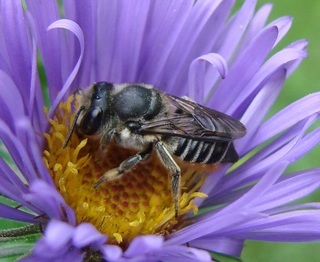Since 1998, when it was established, Discover Life has assembled over 500 biological databases that together contain over 1.19 million valid species names. Currently it maps the geographic distribution of over 200,000 of these. It has identification guides, images, text, and links to other websites for many, but not yet all species. For some species, information is minimal -- just the scientific name, position in the tree of life, scientific authority, and year in which it was described. In short, much still remains to be done to create the envisioned comprehensive, interactive encyclopedia of life -- one that will allow users to identify species, retrieve information about them, and moreover, contribute their observations to a system that has sufficient checks, balances, and filters to maintain high data quality. Thanks in part to a generous equipment grant from Sun Microsystems and support from the American Museum of Natural History and Smithsonian Tropical Research Institute, Discover Life has a powerful network of 20 computers running Solaris. These are located in Georgia and at the Missouri Botanical Garden. Through October, 2007, they had served a total of over 192 million pages and images, 47% of them in the last 12 months; 8.6 million in the last month. Partly because many users are from schools and colleges, the number of IP addresses that access Discover Life each month varies seasonally. As an indicator of the number of users in the past year, this number has averaged 151,000 per month, ranging from a low of 103,000 in December to a high of 188,000 in May. We have accomplished all this at relatively little cost in terms actual dollars raised by the Polistes Foundation. Since being establisted 2002, the Polistes Foundation has raised approximately $25,000 to $100,000 per year in support of Discover Life, the latter figure being for this year, through July, 2007. Our success rests on fiduciary efficiency, state-of-the-art technology, belief that source providers should always retain ownership and control of their information, and above all, the goodwill and contributions of our human network of researchers, partners, teachers, students, volunteers, and dedicated staff. We are particularly grateful to UGA and the Missouri Botanical Garden for providing band-width and other facilities, to Topozone.com for aerial photographs and maps, to the U.S. Geological Survey's National Biological Information Infrastructure (NBII) for support through a 5-year cooperative agreement (Basic Agreement 04CRAG0005), and to several private donors who have helped make ends meet. By 2012, we propose to staff and equip a global network of 25 regional centers and 100 smaller country- or state-level nodes. The Polistes Foundation's 10-year Business Plan and Prospectus present the rationale for these. Starting in 2008, as funding permits, we propose to staff 8 regional centers (Australia, Chile, Madagascar, Malaysia, Morocco, Panama, South Africa, and Taiwan) and to field 25 community-based research teams. These teams will start state-level nodes and work with the U.S. National Park Service to develop research protocols and identification guides for their target groups of organisms in specific parks (see Community-based research on the impact of environmental changes in U.S. National Parks and elsewhere in North America). NBII will provide $20,000 for the initial database support and training needed by these teams. To accomplish our research and educational objectives, PHER has set a goal of raising $750,000 in grants and donations in 2008. We hope that the National Park Service will match all private donations, enabling us to support 25 community-based research teams in the United States. If successful, our efforts will provide critical information to many others working in education, public health, and environmental fields.
Updated: 21 November, 2007
|
